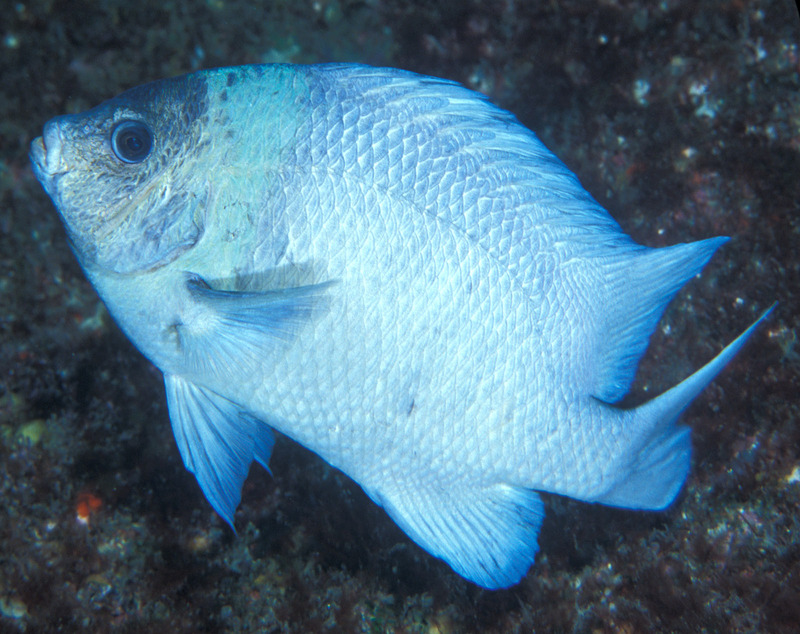|
| Query: Black angelfish | Result: 22nd of 26 | |
Kermadec Scalyfin (Parma alboscapularis) - Wiki
| Subject: | Kermadec Scalyfin (Parma alboscapularis) - Wiki
| |

| Resolution: 1600x1268
File Size: 452145 Bytes
Date: 2006:06:18 17:41:26
Upload Date: 2007:08:15 22:09:41
|
Kermadec scalyfin
From Wikipedia, the free encyclopedia
[Photo] Kermadec scalyfin, Parma kermadecensis. Photo by Ian Skipworth
The Kermadec scalyfin, Parma alboscapularis, is a damselfish of the genus Parma, found around New Zealand's Kermadec Islands (and since 1999 around the northern New Zealand mainland) to depths of between 3 and 20 m, over shallow rocky reef areas. Its length is up to 22 cm.
The Kermadec scalyfin is a deep-bodied chunky fish that has only comparatively recently been separated from the similar Australian white-ear scalyfin, Parma microlepis, and the New Zealand black angelfish, Parma alboscapularis. It is unusual in that it grows rapidly to its adult size in about 18 months, but then stops growing so that all adult Kermadec scalyfin are approximately equal in size.
These fish are named scalyfins because their dorsal fin spines have scale patterns in between, which sets them apart from other groups of fishes.
Adults of both sexes are a uniform blue-black. Juveniles are a spectacular black with four vertical yellow stripes, and iridescent blue markings and edges to the fins.
http://en.wikipedia.org/wiki/Kermadec_scalyfin
| The text in this page is based on the copyrighted Wikipedia article shown in above URL. It is used under the GNU Free Documentation License. You may redistribute it, verbatim or modified, providing that you comply with the terms of the GFDL. |
|
^o^
Animal Pictures Archive for smart phones
^o^
|
|

